Bird genetics asks welcome! I can phenotype adult birds.
Don't wanna be here? Send us removal request.
Text
I love ASIP! I love reading about agouti mice. I knew about all of the basic colors but I didn't know there were so many rare yellow alleles.
I love brindle cattle. I'm pretty jealous! There are so many known agouti alleles in wild mammals but they never test common domestic bird genes.
An Japanese Quail ASIP mutation that has never been tested in the lab is Calico. It is mostly recessive to wild type.

Source: Pips n' Chicks
ASIP - Agouti Signaling Protein
ASIP is responsible for the distribution of melanin in mammals: in the presence of the functional protein, the pigment cell produces red-yellow pheomelanin instead black-brown eumelanin. Loss of function agouti mutations are one of the most common causes of melanism.
Japanese quail
lethal yellow
fawn
recessive black
Inheritance: fawn is intermediate with the wild type and recessive black, lethal yellow is, well, lethal in homozygotes, recessive black is recessive to the wild type. Lethal yellow and fawn/recessive black interaction is unknown.

manchurian (fawn/fawn), italian (fawn/[wild or black]), lethal yellow (yellow/[wild or black]) next to wild type (wild/[wild or black]), recessive black (black/black).
Chestnut-bellied monarch
melanic
Inheritance: unknown.

image source
Brushtail possum
black
Inheritance: recessive.

image source
Tasmanian devil
Kind of an exception in this collection: tasmanians devils are fixed for an ASIP variant (missing an exon compared to the closely related quolls).

image source
Mouse
lethal yellow
viable yellow
hypervariable yellow
intermediate yellow
several other rare yellow alleles (ex. sienna)
white-bellied agouti (apparently twenty (!) different spontaneus mutations have been found)
intermediate agouti
tanoid
black-and-tan (twenty-two different mutations)
mottled agouti
nonagouti (four mutations)
extreme nonagouti (unlike the rest here, this isn't a sponaneous mutation, but i'll include it, because it seems to be present in the fancy)
Inheritance: Lethal yellow is considered the most dominant, because all Ay/_ mice will be pure yellow regardless of the other allele. (Ay/Ay homozygotes die in the womb and get reabsorbed, so their color is impossible to observe.) Intermediate yellow (not pictured) is dominant over everything except lethal yellow. Viable yellow is somewhat codominant with the rest of the alleles, making yellow-brindled animals with variable penetrance (homozygotes can be brindled too, although more commonly they are just a bit sooty). Hypervariable yellow is codominant, the expression of the other agouti allele depends on the individual. The other yellow alleles (not pictured) are less documented, but they are probably dominant over the non-yellow alleles. Light-bellied agouti is completely dominant over all the remaining alleles; the intermediate agouti allele, otherwise indistinguishable of light-bellied agouti, is intermediate with nonagouti. The wild type agouti is codominant with black-and-tan and tanoid alleles (making phenotypically basically light-bellied agoutis) and dominant over the nonagoutis. Tanoid (not pictured) is dominant over the remaining three, tan is dominant over both nonagouti, and the "simple" nonagouti is dominant over the extreme nonagouti.

lethal yellow (Ay/_), agouti brindle (aka viable yellow on agouti) (Avy/A), black brindles with variable expression (aka viable yellow on nonagouti) (Avy/a), hypervariable yellow litter (Ahvy/_), agouti fox aka light-bellied agouti (Aw/_), agouti (A/_), agouti tan (A/at), black tan (at/_), extreme black (ae/ae) and black (a/_). Note the ears! When otherwise not indicated, images from here.
North American deer mouse
melanic
Inheritance: recessive.

image source
Rat
black
Inheritance: recessive.

image source
Guinea pig
recessive black
Inheritance: recessive.

image source
Tassel-eared squirrel (Abert’s squirrel)
black
Inheritance: recessive.

image source
Rabbit
tan/otter
non-agouti
Inheritance: order of dominance is both wild type > tan > non-agouti.

tan or otter, black
Dog
dominant yellow
shaded yellow
agouti (wild type but rare)
black saddle
black back (three mutation)
recessive black
Inheritance: order of dominance is yellow > shaded yellow > agouti > saddle = black back > black. Black saddle and black back are intermediate with each other.

Dominant yellow aka clear sable (DY/_), shaded yellow or sable (SY/_), agouti (AG/_), black saddle or saddle tan (BS/[BS or a]), creeping tan (BS/BB), black back aka black-and-tan (BB/[BB or a]), recessive black (a/a). All images from here.
Red fox
dark standard silver
Inheritance: recessive.
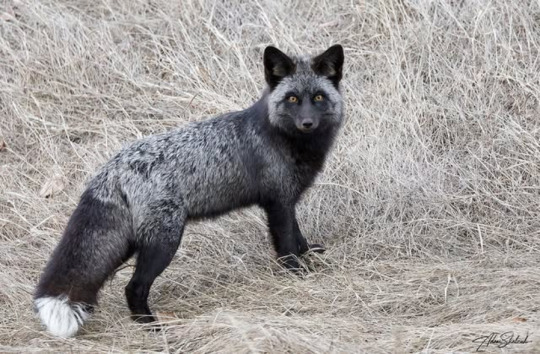
image source
Domestic cat & Leopard cat
charcoal (four different mutations; from the leopard cat)
non-agouti
Inheritance: recessive to the domestic wild type, intermediate with each other.

twilight charcoal (Apb/Apb), midnight charcoal (Apb/a), black (a/a)
Asiatic golden cat
black
Inheritance: (probably) recessive.

image source
Kodkod
melanistic
Inheritance: recessive.

image source
Pampas cat
melanistic
Inheritance: recessive.

image source
Leopard
black (two different mutations)
Inheritance: recessive.
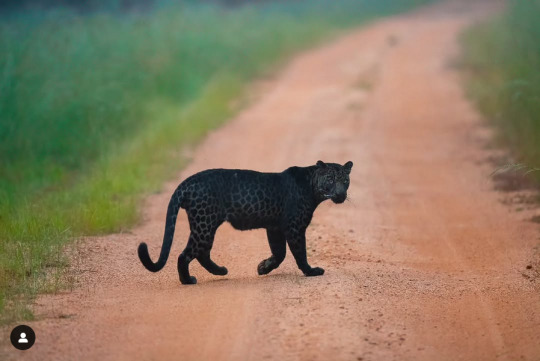
image source
Cattle
brindle
Inheritance: dominant.

image source
Zebu
dark
Inheritance: intermediate.


Based on the paper describing the mutation, i think these could be examples of a heterozygote and a homozygote (the wild type is completely white).
Water buffalo
white
Inheritance: dominant.

image source
Arabian camel
black and dark brown
Inheritance: unknown.

image source
Sheep
white (and tan)
recessive black (two mutations)
more suspected but not yet found alleles (light badgerface, badger, black&tan, light blue, swiss markings, blue, gray, lateral stripe, english blue, dark blue, paddington blue, etc)
Inheritance: i have to assume it's similar to goats. See there.
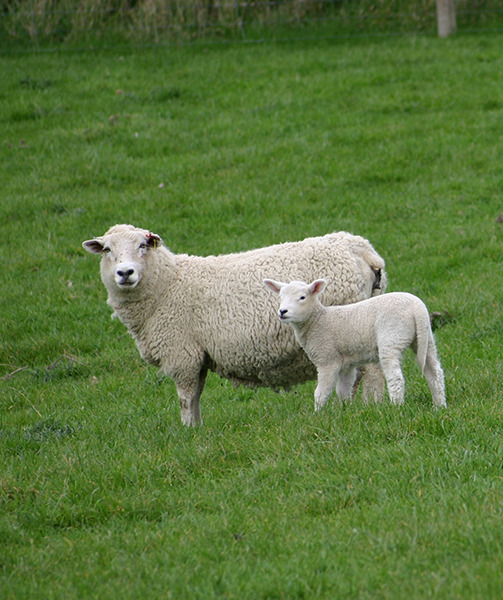

white (white/_), black (black/black) with wild type (note the light belly and chin)
Goat
white/tan/gold - so, solid pheomelanin
peacock
bezoar (wild type, but rare)
swiss markings
badgerface (blackbelly)
more suspected but not yet found alleles (black mask, grey, lightbelly, lateral stripes, mahogany, red cheek, nonagouti/black, etc)
Inheritance: every allele puts its respective phenomelanistic parts on the phenotype; so they are all codominant. In practice this sometimes becomes dominant-recessive, when one pattern completely "covers" another (between the pictured alleles, for example swiss markings doesn't add more tan to a bezoar, so bezoar/bezoar will look the same as bezoar/swiss). This makes white/tan the most dominant and solid black the most recessive.
Note that this gene only determines the shape and size of the black patches, and the color of the rest of the goat (white or brown, depending on pheomelanin intensity) is determined by other genes!

white, badgerface, bezoar, peacock, swiss marked - these are all homozygotes. I'd love to include heterozygotes too, but i couldn't find a good source, and i'm not confident enough to id on my own. If anyone can help me with either, i'd be very grateful.
Roe deer
black
Inheritance: recessive.

image source
Fallow deer
black (two different mutations)
Inheritance: recessive.

image source
Impala
black
Inheritance: recessive.

image source
Horse
recessive black
Inheritance: recessive.

image source
Donkey
no light point
Inheritance: recessive.

image source (agouti wild type back, agouti mutant NLP front)
43 notes
·
View notes
Text
Melanotic!
Brassy back is theorized to be Melanotic on Wildtype but it is possibly an unknown dominant melanizing gene that hasn't been tested. I classify it as such in my posts because in the end we don't know everything and applied genetics need to be simplified to work.
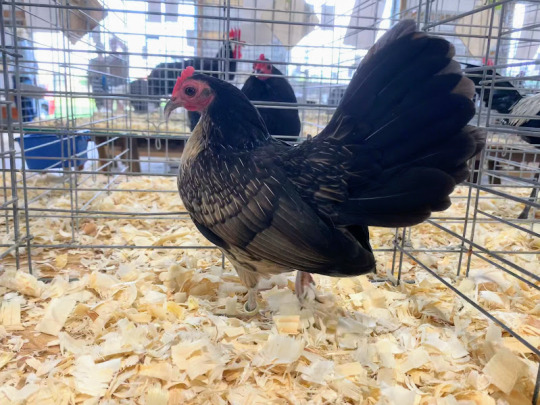

Photo by Cackle Hatchery
GJA5 - Gap Junction Protein Alpha 5
The encoded protein is a component of gap junctions, which are composed of arrays of intercellular channels that provide a route for the diffusion of low molecular weight materials from cell to cell.
Chicken
melanotic
Inheritence: incompletely dominant (dominant-leaning intermediate).

double laced
30 notes
·
View notes
Text
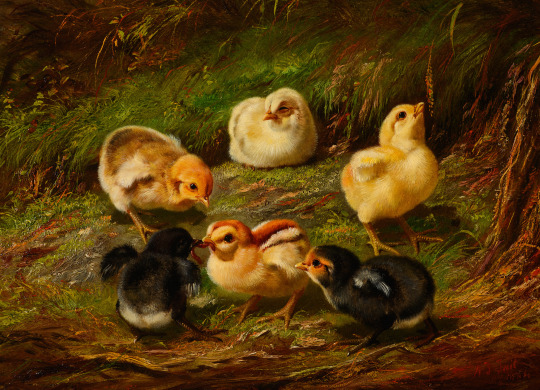
Arthur Fitzwilliam Tait (1819 – 1905). Chicks (1864). Oil on board.
Coeur d’Alene Art Auction
866 notes
·
View notes
Text





Submitted for classification by @blogjustforasks
"The Great Eared Nightjar, one of the larger Nightjar species."
318 notes
·
View notes
Text

The first sighting of a Gray Catbird is always a joyful event.
They can be quite chatty, at times, and are excellent mimics of the calls of other bird species.
565 notes
·
View notes
Note
I would have thought that mutating back to wild type would be harder because it's hard to get the correct sequence of As Cs Ts and Gs back in order once they've been messed up by a mutation.
Somatic mutation in cats can be any colour?? I've only seen black on ginger, a black spot on red pelt(or black spot on blue pelt), but what about red spot on black?? Or any other colour??
In theory, i'd say yes, anything is possible, but there are mutations that can happen more easily, and i think red mutating back to black is easier than black to red. (I think i've read somewhere that reverting to wild type is generally more likely? But i don't take responsibility for this claim.)
17 notes
·
View notes
Text
It's not confirmed by a lab but by practice: Ginger Coturnix and Sex Linked Brown are allelic with Roux and therefore TYRP1. Unfortunately Ginger is very difficult to tell apart from Roux and Sex-Linked Brown is difficult to tell from wild type.
Order of Dominance: Roux > Ginger > Sex-Linked Brown > Wildtype
Ginger

Source: PipsnChicks
Sexlinked Brown

Source: PipsnChicks
My theoretical unconfirmed fading in the sun sexlinked recessive mutations that are probably also TYRP1 mutations
Buff Geese
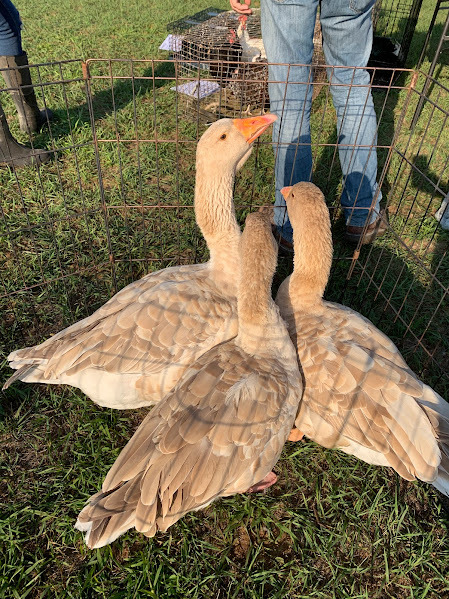
Chocolate Ducks


Chocolate Turkeys (Porters)

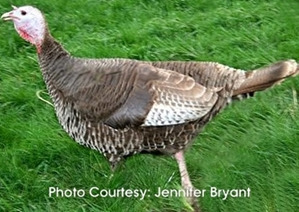
Photos from Porters Rare Heritage Turkeys
Chocolate Muscovy

Photo from FeatherSite.com
TYRP1 - Tyrosinase Related Protein 1
This gene encodes a melanosomal enzyme that belongs to the tyrosinase family and plays an important role in the melanin biosynthetic pathway. Defects in this gene are the cause of rufous oculocutaneous albinism and oculocutaneous albinism type III.
Common carp
brown/gray
Inheritence: unspecified.
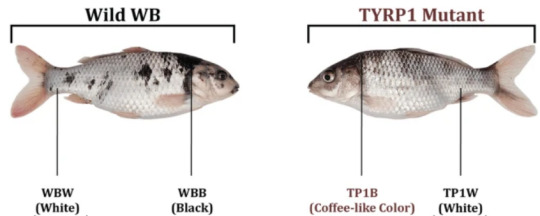
image source
Axolotl
copper
Inheritence: recessive.
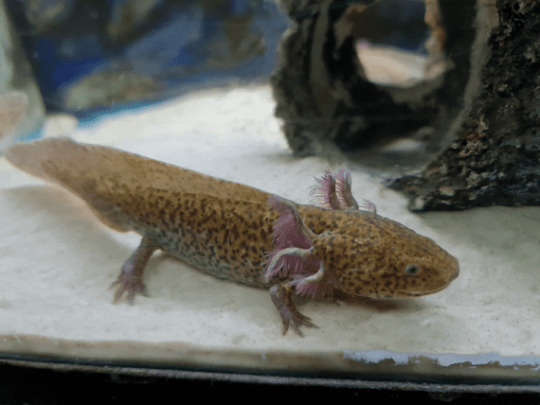
image source
Toad-headed agama
dark
light
Inheritence: dark is dominant over light (unclear which is the later mutation).

dark, light
Chicken
chocolate
Inheritence: sex-linked recessive.

image source
Japanese quail
roux
Inheritence: sex-linked recessive.


roux, roux vs wild type
Pigeon
ash-red
brown (at least three mutations)
Inheritence: sex-linked, order of dominance is ash-red > blue (wild type) > brown.

image source
Saker falcon
light brown
Inheritence: sex-linked recessive.


wild type and brown feather, lightly colored falcon from the webpage of the breeder credited by the authors (color unconfirmed)
Mouse
brown (four mutations)
cordovan (two mutations)
light
Inheritence: i think pretty intermediate with each other and with the wild type. Cordovan is dominant over brown.



light (Blt/Blt), nonagouti cordovan-chocolates (bc/[bc or b]), brown-chocolates (b/b)
Rabbit
brown
Inheritence: recessive.

image source
Dog
brown/liver (six mutations)
Inheritence: recessive.

image source
Black bear
cinnamon
Inheritence: unknown.

image source
American mink
american palomino
Inheritence: recessive.

image source
Domestic cat
chocolate
cinnamon
Inheritence: order of dominance is black (wild type) > chocolate > cinnamon.


chocolate (b/[b or b']), cinnamon (b'/b')
Leopard
red (strawberry)
Inheritence: recessive.
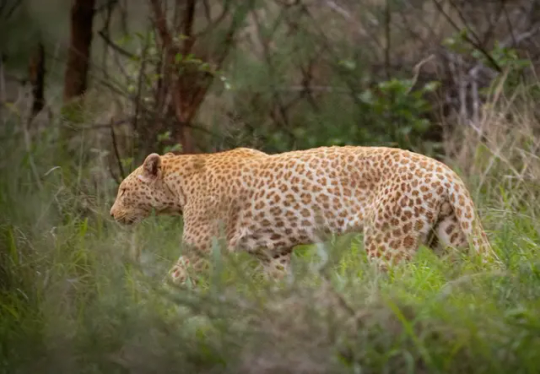
image source
Pig
brown/blond/silver
Inheritence: intermediate.

reddish brown (B/b), litter showing all three colors, black (B/B), silver brown (b/b)
Sheep
brown (four mutations including soay light)
Inheritence: recessive.


light, brown
Goat
brown
Inheritence: dominant.

image source
Cattle
dun brown
Inheritence: recessive.
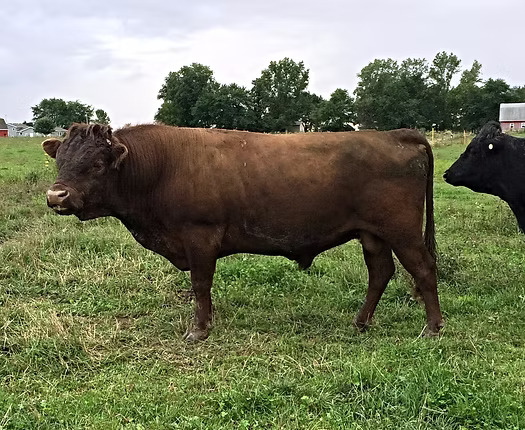
image source
Rhesus monkey
golden (two mutations)
Inheritence: recessive.
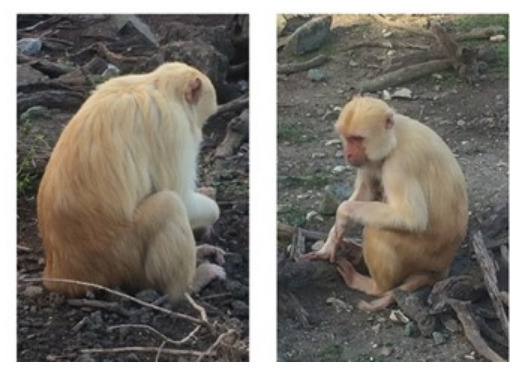
image source
169 notes
·
View notes
Text
I'd never heard of the Five Gray chicken before, interesting! I didn't know blue cats and lavender chickens were mutations of the same gene!
Other birds that I think might have MLPH mutations (but unconfirmed):
Evidence: all of these mutations have recessive inheritance. All these birds look kind of crusty.
Recessive Blue Mallard Ducks

photo from Larson's Miniatures
Silver Wood Ducks

Photo from Basil's Ducks
Lavender Muscovy

Photo from Kellyatthecoast.com
Recessive Slate Turkeys


Photo from turkeycolorgenetics.com
Milky Pigeons

By @My_RARE_COLORED_RACING_PIGEONS
MLPH - Melanophilin
The protein encoded by this gene is involved in melanosome transport and serves as link between melanosome-bound RAB27A and the motor protein MYO5A. Mutations here cause "standard" dilution.
Ball python
ghost
Inheritance: recessive.
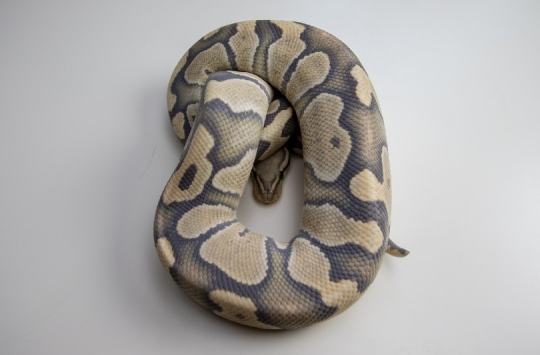
image source
Chicken
lavender
five-gray
Inheritance: recessive to wild type, interaction unknown.
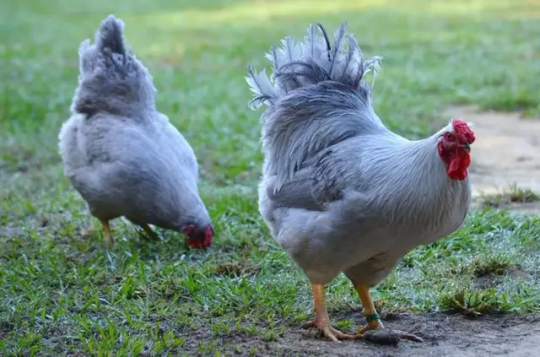

lavender, five-gray
Japanese quail
lavender
Inheritance: recessive.
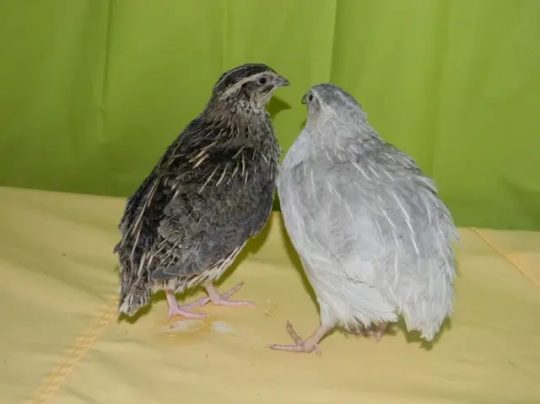
wild type and lavender. image source
Canary
opal/mogno
onyx
Inheritance: recessive to the wild type, intermediate with each other.



opal, onyx, opal and onyx variations (mogno proved to be the same mutation as opal)
Mouse
leaden
Inheritance: recessive.

image source (mice have two blue genes with identical phenotypes - i can't tell it this is a leaden (aka "mock blue") or a "proper blue".)
Rabbit
dilute
Inheritance: recessive.

image source
Dog
dilute (three different mutations)
Inheritance: recessive.

image source
Domestic ferret
silver
Inheritance: intermediate.


Light silver, dark silver. I couldn't find trustworthy illustrations for these colors, however i tried to choose pictures according to the descriptions in paper identifying the mutation: "the homozygotes for the mutant type are almost completely white, and the heterozygotes have a weakened color and white spots in various parts of the skin".
American mink
silverblue (two mutations)
Inheritance: recessive.
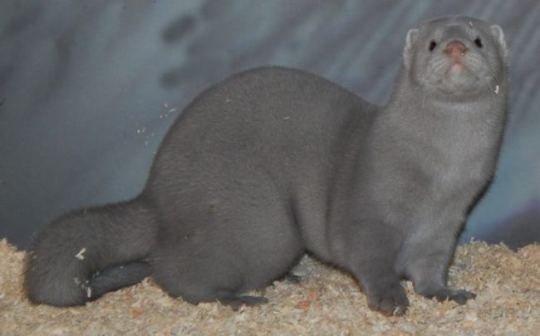
image source
Domestic cat
dilute
Inheritance: recessive.
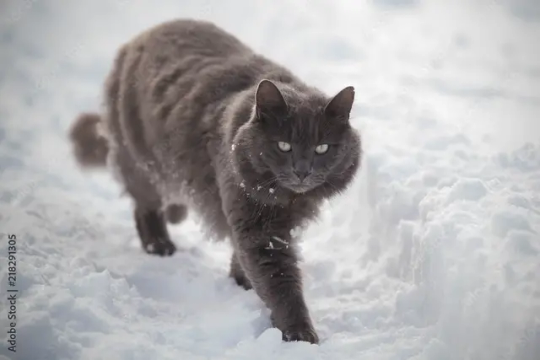
image source
Sheep
lilac
Inheritance: recessive.

image source
Cattle
cool gray/Larson blue
Inheritance: recessive.

image source
83 notes
·
View notes
Text
TYRP1 - Tyrosinase Related Protein 1
This gene encodes a melanosomal enzyme that belongs to the tyrosinase family and plays an important role in the melanin biosynthetic pathway. Defects in this gene are the cause of rufous oculocutaneous albinism and oculocutaneous albinism type III.
Common carp
brown/gray
Inheritence: unspecified.

image source
Axolotl
copper
Inheritence: recessive.

image source
Toad-headed agama
dark
light
Inheritence: dark is dominant over light (unclear which is the later mutation).

dark, light
Chicken
chocolate
Inheritence: sex-linked recessive.

image source
Japanese quail
roux
Inheritence: sex-linked recessive.


roux, roux vs wild type
Pigeon
ash-red
brown (at least three mutations)
Inheritence: sex-linked, order of dominance is ash-red > blue (wild type) > brown.

image source
Saker falcon
light brown
Inheritence: sex-linked recessive.


wild type and brown feather, lightly colored falcon from the webpage of the breeder credited by the authors (color unconfirmed)
Mouse
brown (four mutations)
cordovan (two mutations)
light
Inheritence: i think pretty intermediate with each other and with the wild type. Cordovan is dominant over brown.



light (Blt/Blt), nonagouti cordovan-chocolates (bc/[bc or b]), brown-chocolates (b/b)
Rabbit
brown
Inheritence: recessive.

image source
Dog
brown/liver (six mutations)
Inheritence: recessive.

image source
Black bear
cinnamon
Inheritence: unknown.

image source
American mink
american palomino
Inheritence: recessive.

image source
Domestic cat
chocolate
cinnamon
Inheritence: order of dominance is black (wild type) > chocolate > cinnamon.


chocolate (b/[b or b']), cinnamon (b'/b')
Leopard
red (strawberry)
Inheritence: recessive.

image source
Pig
brown/blond/silver
Inheritence: intermediate.

reddish brown (B/b), litter showing all three colors, black (B/B), silver brown (b/b)
Sheep
brown (four mutations including soay light)
Inheritence: recessive.


light, brown
Goat
brown
Inheritence: dominant.

image source
Cattle
dun brown
Inheritence: recessive.

image source
Rhesus monkey
golden (two mutations)
Inheritence: recessive.

image source
169 notes
·
View notes
Note
Leafpool is forever a Torbie for me. Fireheart a ticked red tabby. Sandstorm could be a cream mackerel torbie. I picture Squirrelflight as a bright, deep red classic tabby though. I always have. I'm surprised by how many people draw her without the side markings.
I was thinking about heterozygous ticked Leafpool, and I don't know how I feel about it... huh. Well, what do you think about it?? I have a Firestar headcanon. He's heterozygous ticked, same with Squirrelstar, so what if Leafpool was also ticked?? What do you think.
Interesting... i think it'd work. She's always called light brown, and ticked can give that impression. Still enought striping on the face and the legs to be obviously tabby.

This is a tortie as well. Sorry, Leafpool is always and forever a tortie for me
36 notes
·
View notes
Note
In English we use the word "Incompletely Dominant" instead of intermediate.
I like the word Intermediate though, it is short and sweet. Also it's annoying tjhat Codominant and Incompletely Dominant imply that both alleles have equal effects. Often, I feel like one allele has much more of an effect than the other so I'm like, do I say this mutation is Incomplete dominant or Dominant? Sometimes I use the colloquial "Mostly Dominant." For example Mahogany and Columbian are generally accepted as Dominant but heterozygotes are usually "less Mahogany" or "less Columbian" than homozygotes. And Pansy and Calico quail are even worse. Heterozygotes almost look wildtype so they could be seen as recessive, but they do have a minor effect.
I think that simple language sometimes fails when it comes to describing inheritance. We can completely understand it but instead of condensing it into one word, sometimes you need like two sentences. Or a picture.
what does it mean when it says inheritance is intermediate?
When i was learning genetics in high school, we had had three basic (single-gene, autosomal) inheritence patterns: dominant-recessive, codominant and intermediate (or as we had called it in hungarian, intermedier). After reading a bunch of english-language material online, i'm not sure if this is an universal model, but i still like it and use it in my genetics posts.
The difference between them is what happens with the heterozygotes:
If the heterozygote looks exactly like one of the homozygotes, then it's dominant-recessive. In cats, tabby/solid is a good example of this, because an Aa cat (tabby carrying solid) is phenotypically indistinguisable from an AA tabby.
If the heterozygote has the traits of both homozygotes, it's codominant; the textbook example of this is AB blood type. In cats, tortoiseshells are a pretty good example, because they indeed are both black and red.
If the heterozygote looks like it's in the middle between the two homozygotes but it's also distinct from both, that's intermediate. I remember the standard example of this was crossing white and red flowers and getting pinks. In cats, mink is a well-known intermediate phenotype between sepia and point.
Of course, this is often not clear-cut, what is codominant and what is intermediate can be blurred (and if you look close, almost nothing is really fully dominant), and there are cases when none of these really fit. For example, in the gene series i decided to call certain white spotting genes 'additive': aka, heterozygotes have some amount of white, homozygotes have more.
41 notes
·
View notes
Text
#i would love to see what cuckoo/barred does to such complex patterns#just for the sake of my giant chicken genetics summary project that lays in my closet and whispers at me after dark
Hmmm, the only complex pattern that I can think of that cuckoo/barred affects is gold laced in candy corn Polish. That is Birchen based.
E^R/E^R Db/Db Co/Co Ml/Ml Pg/Pg B/-

Photo from Mulberry Meadow Farms on Instagram. (It was hard to find pictures of this. Just look up Candy Corn Polish.
But I wonder if a wheaten-based laced pattern would not have the clean, even barring that this birchen-based one since wheaten very often blurs barring. I doubt it though. It would probably look very similar to this.
The Pattern Gene on Wheaten
Pg (pattern gene) can also create patterns on the e^Wh (wheaten) base, and while these patterns aren't widespread, they are common in Cornish.
It is interesting to me that while it is the lightest e base wheaten produces some of the darkest patterns, while E^R creates patterns with the least amount of black. This is only possible due to the melanizing affect of charcoal (cha).
The Cornish version of double laced is known as "dark." Bantam dark Cornish are usually Wheaten based. Large fowl dark Cornish are Partridge based. The way you can tell what E-base your birds have is to look at the chick down. The dark genotype is e^Wh/e^WhMl/Mlcha/chaMl/MlMh/Mh. They may have some additional genes that make them darker.
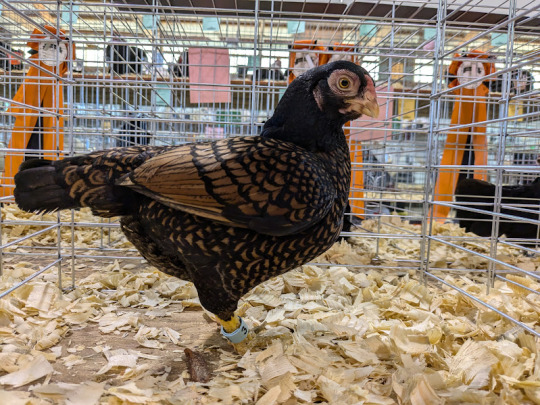
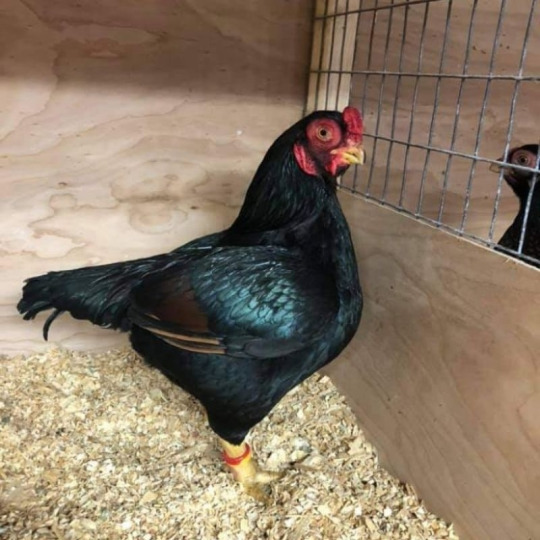
The source for this photo was sus but I really struggled to find a dark Cornish bantam male so if you have a better one that you'd like me to feature, let me know!
Laced Cornish
Laced in Cornish has black or diluted tails. I have recently discovered their necks can and should be laced as well but those are the Patridge-based white-laced reds. Thanks to the Charcoal gene, the Wheaten-based bantams will have mostly solid-colored necks.
I haven't seen any black laced red Cornish, only blue laced red, or like in this picture, white laced red. The existance of blue laced red implies black laced red and splash laced red exist (and some splash laced red are probably exhibited as white laced red) but I digress.
All I have a picture of is the white laced red so I will stick to that. ("I" represents dominant white)
e^Wh/e^WhPg/Pgcha/chaMl/MlCo/CoMh/MhI/I
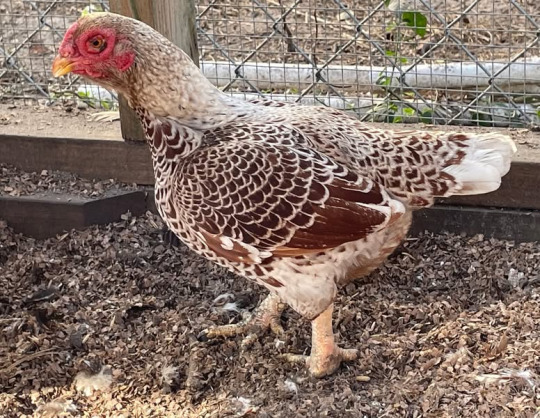
Photo by Chris McGeorge on Facebook.
12 notes
·
View notes
Text

Squirrel Cuckoo (Piaya cayana), gettin puffy and fluffy, family Cuculidae, order Cuculiformes, Costa Rica
photograph by Carlos A Carmona
1K notes
·
View notes
Text
Cats getting caught doing crimes
135K notes
·
View notes
Text
The Pattern Gene on Wheaten
Pg (pattern gene) can also create patterns on the e^Wh (wheaten) base, and while these patterns aren't widespread, they are common in Cornish.
It is interesting to me that while it is the lightest e base wheaten produces some of the darkest patterns, while E^R creates patterns with the least amount of black. This is only possible due to the melanizing affect of charcoal (cha).
The Cornish version of double laced is known as "dark." Bantam dark Cornish are usually Wheaten based. Large fowl dark Cornish are Partridge based. The way you can tell what E-base your birds have is to look at the chick down. The dark genotype is e^Wh/e^WhMl/Mlcha/chaMl/MlMh/Mh. They may have some additional genes that make them darker.


The source for this photo was sus but I really struggled to find a dark Cornish bantam male so if you have a better one that you'd like me to feature, let me know!
Laced Cornish
Laced in Cornish has black or diluted tails. I have recently discovered their necks can and should be laced as well but those are the Patridge-based white-laced reds. Thanks to the Charcoal gene, the Wheaten-based bantams will have mostly solid-colored necks.
I haven't seen any black laced red Cornish, only blue laced red, or like in this picture, white laced red. The existance of blue laced red implies black laced red and splash laced red exist (and some splash laced red are probably exhibited as white laced red) but I digress.
All I have a picture of is the white laced red so I will stick to that. ("I" represents dominant white)
e^Wh/e^WhPg/Pgcha/chaMl/MlCo/CoMh/MhI/I

Photo by Chris McGeorge on Facebook.
12 notes
·
View notes
Text

ITS GREAT LAKES AWARENESS DAY!!!!!
On this excellent day, be aware that this is the largest group of freshwater lakes in the world, covering over 95,000 square miles and reaching depths of over a thousand feet. They are beautiful freshwater seas.
Also when you die in these lakes, the very cold, oxygen-poor conditions at the bottom preserves you perfectly for all eternity. You will not rot and nothing will eat you. You will exist for as long as the Great Lakes do. Many shipwrecks still have the crew on board. Be Aware.
43K notes
·
View notes